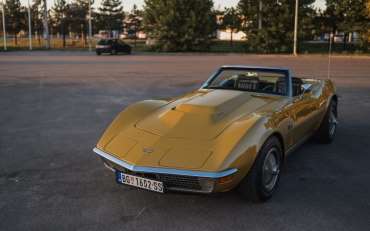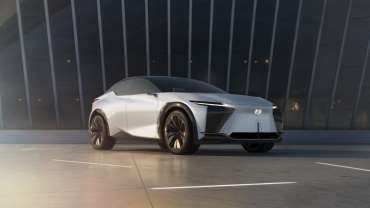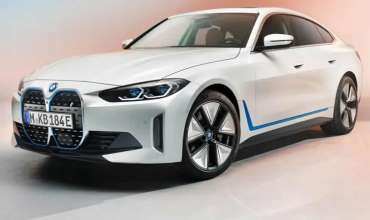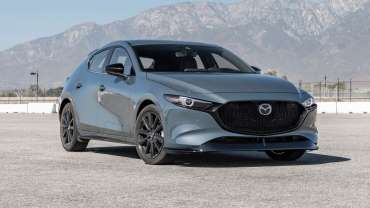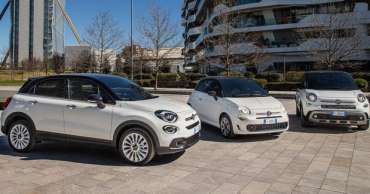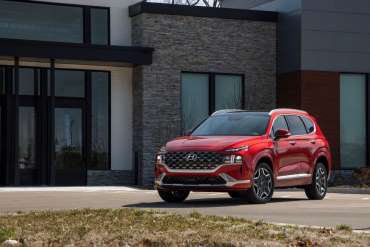
Worldcarblog.com
"And how come you don't want it?" Chevrolet Corvette C3
The late 1960s were years of great change. Freedom was conquered on many fronts, from Paris all the way to the moon, and on the roads of America, freedom was conquered with the squeak of wide tires and the roar of V8 engines. Chevrolet's flagship has entered its second generation, and it has changed drastically during the mentioned years.
The Chevrolet Corvette C3 was introduced as a 1968 model based on the Mako Shark II concept, and all the drama of that design study was transferred right to the production model. The perfect balance of sharp character lines and curvature created another silhouette to remember and the Corvette was thus again the most attractive car America has ever seen.
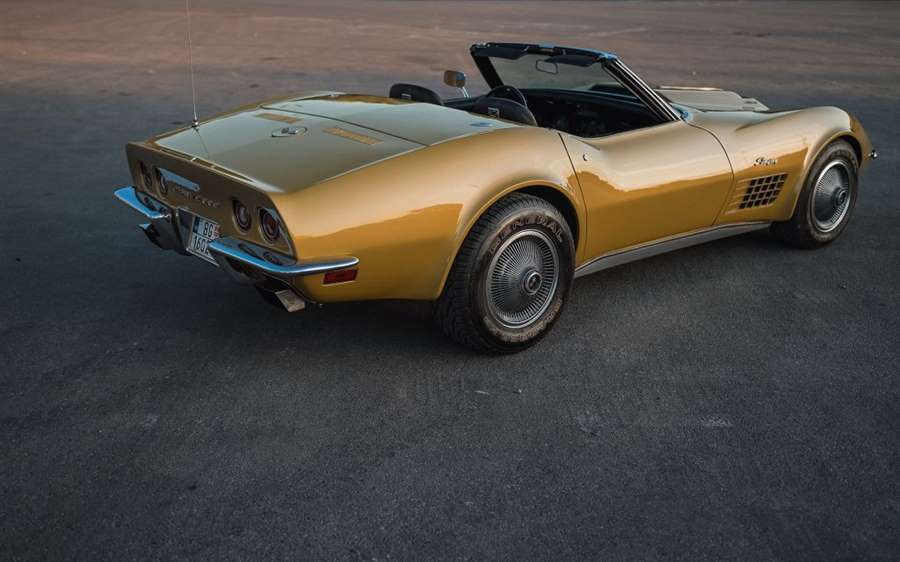
Over half a century later, the C3 Corvette is still a dream car no matter which side of the Atlantic that dream is dreamed of. A few years ago, one such dream came true when the 1972 Corvette C3 arrived on an overseas ship and landed in Serbia.
"And how come you don't want her?" Kiki described his dream car quite briefly. However, the road to its final realization did not begin with turning the key on the perfect car. Although it looked great in the photos, when it arrived, this Corvette revealed a large number of shortcomings that led Kiki on the path of a two-year restoration. In the process, he did most of the work with his son, which gave the Stingray project an indelible personal stamp. As Kiki explained to us, the Corvette arrived in Serbia in black and with a 454 V8 engine, which after extensive improvements had as many as 680 horsepower.
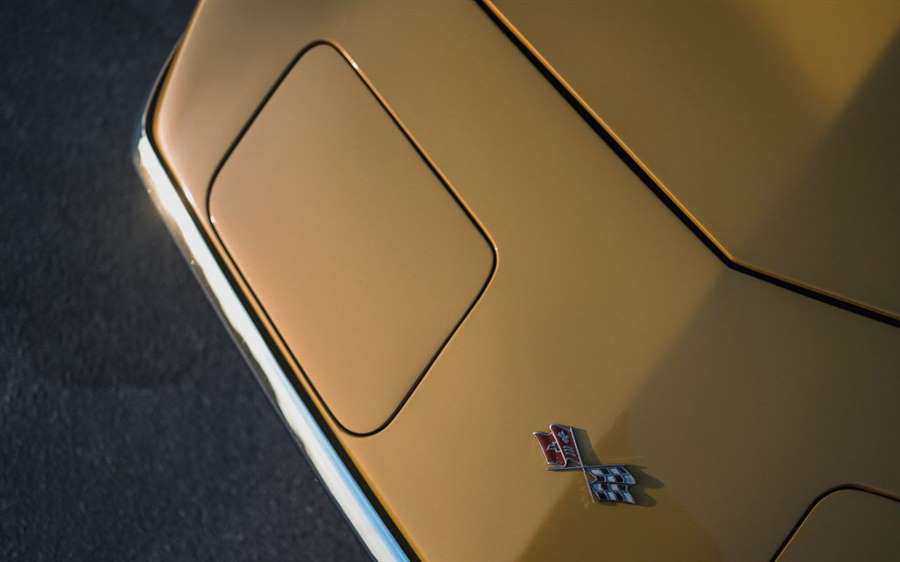
In the end, why a rocket? The Chevrolet Corvette was an icon of space racing and it was in this golden color that it was given to astronauts from the Apollo 12 mission. The fact that it looks, accelerates, roars and thunders just like a real space shuttle is just an addition to the claim that the Corvette is actually a spaceship the American way.
Source: Autoslavia
Lexus LF-Z: A crossover that heralds a different brand style
By 2025, more than 10 new Lexus will be electrified - electric and hybrid models are arriving.
The Lexus LF-Z concept is an electric car that Lexus says represents everything that can be expected from a brand in terms of design and technology by 2005.
The basis of the luxury crossover concept is a platform intended for electric models that uses DIRECT4 technology to control 4 × 4 drive power, maximizing the current reaction of the electric motor force for free wheel control.
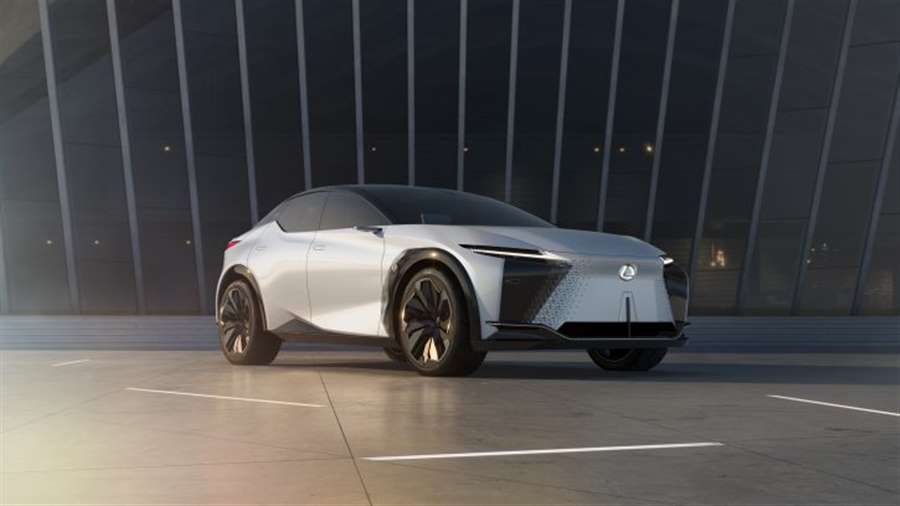
Lexus adds that this technology controls the distribution of power on the wheels and can work in configurations with front, rear or all-wheel drive.
They did not reveal all the details about the car's key hardware components, except for the fact that it has a "steer-by-wire" electric control system.
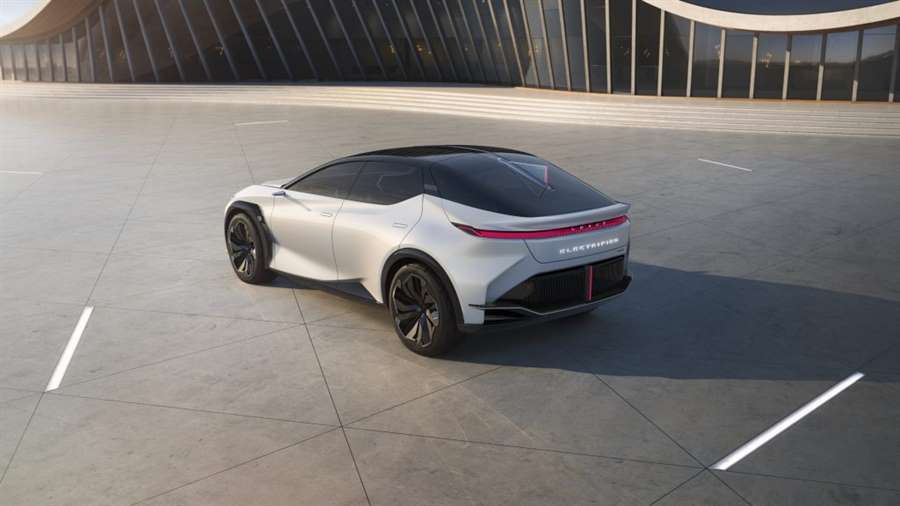
In addition, the design language has been redefined, in this case with a silhouette reminiscent of coupe-crossovers.
The vehicle’s short front and rear overhangs are immediately eye-catching, as are the large wheels, while the rear end of the LF-Z concept is particularly intriguing and includes complex LED lighting as well as a third brake light mounted in the bumper.
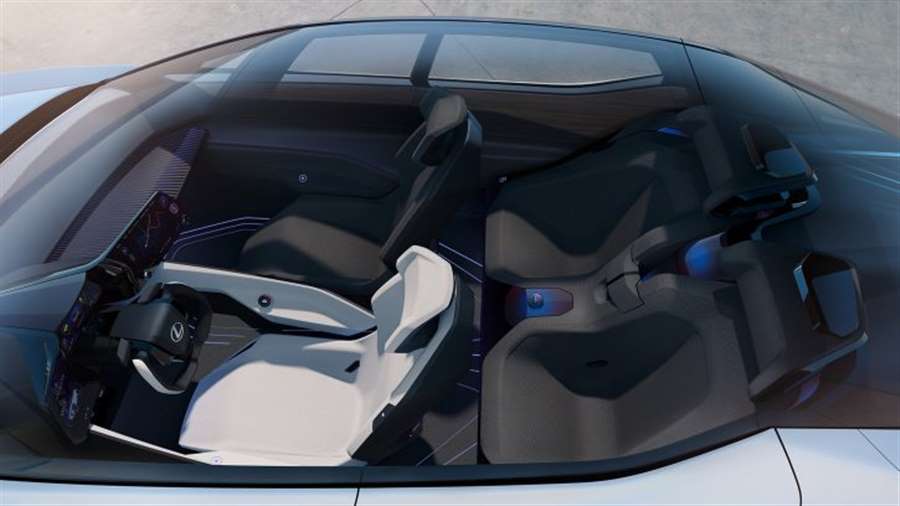
Lexus says that the interior of the vehicle is designed according to the guidelines of the "Tazuna" concept.
In addition to the premiere of the LF-Z concept itself, Lexus has announced a plan to introduce 20 new or improved models by 2025. More than 10 of them will be electrified, including the fully electric model, plug-in hybrids and traditional hybrids, all depending on the market.
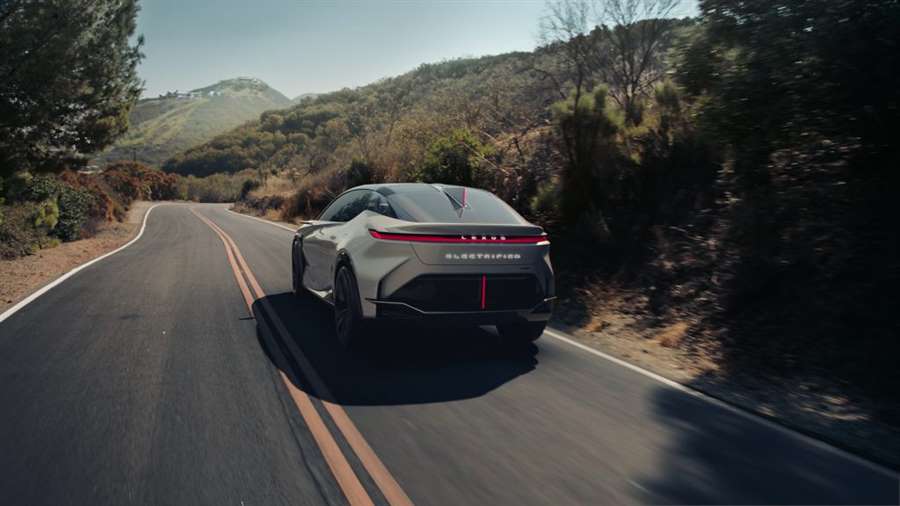
It has also announced an expansion of the range of sedans and SUVs, and will also "strive for new sports models that continue to provide driving fun."
The Japanese carmaker wants to offer electric variants of all its models by 2025 with the idea that electric vehicle sales will exceed gasoline-powered car sales by that date.
BMW i4 Gran Coupe Preview
BMW's Tesla Model 3 rival looks promising for keen drivers
BMW's electric car catch-up operation is gathering pace, as it reveals the next part of its grand plan. The new i4 Gran Coupe is a sleek four-door electric saloon that roughly corresponds with the 3 Series in terms of size, making it a natural rival to the Parkers Car of The Year-winning Tesla Model 3 and the Polestar 2.
There's not too much been revealed about the car yet, as it's been shown three months ahead of schedule. But if it looks familiar to you, it's very similar to last year’s Concept i4, which introduced a number of new BMW i styling elements. But overall, it's a safe-looking design that shouldn't scare off existing BMW customers who are looking to switch to electric cars.
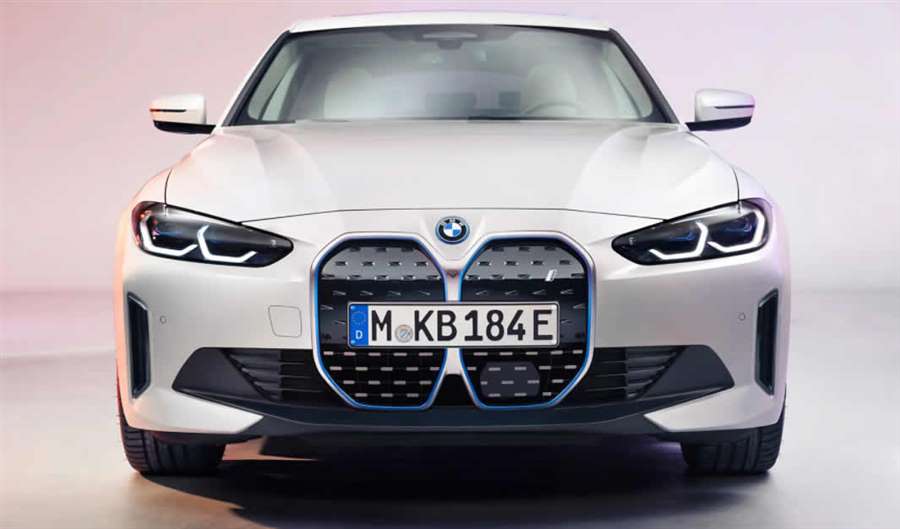
BMW will reveal more about the i4 throughout 2021, but for now, here's what we know about this interesting looking new electric car challenger. We'll also have to wait to see what it looks like inside, but it's a good bet to conclude that its interior will follow the minimalist lead set by the new BMW iX SUV.
BMW iX performance, range and charging
What we do know is that the most potent version of the iX will be powered by a 530hp electric drivetrain and will offer a maximum range of 367 miles. Although it's still some time off being launched BMW has already said that this number reflects the official Combined WLTP 'real world' figure.
The i4 is powered by an 80kWh battery pack, mounted low in the car for the best centre of gravity and better handling. Although there isn't a full set of performance figures, the firm claims that the i4 covers the 0-62mph benchmark in around 4.0 seconds and reach a top speed of more than 125mph.
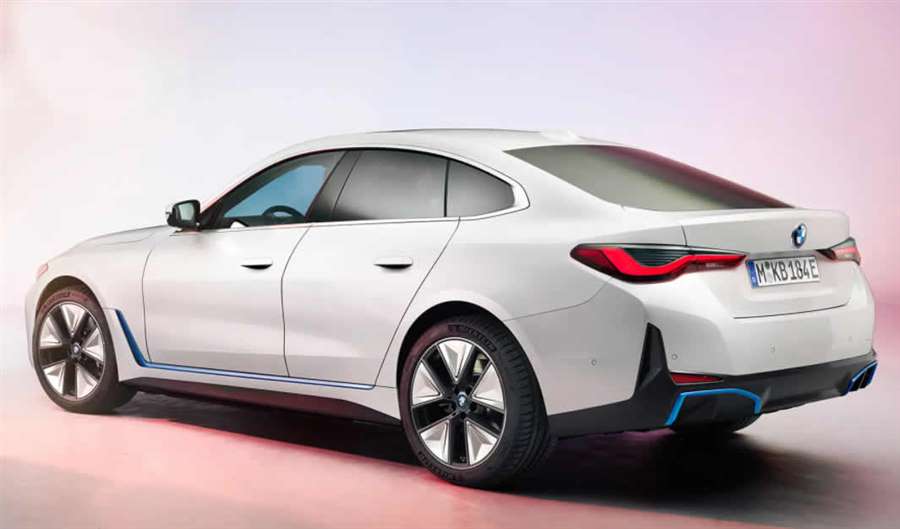
Using the latest charging tech means that the i4 will be compatible with rapid chargers at up to 150kW. What that means for you is that thus connected, you can give the car 62 miles of range in six minutes – or an 80% charge from zero in around 35 minutes.
What models will be available?
BMW is yet to make the model range details public, but it's likely that there will be a number of battery capacities and power outputs available. BMW executives hinted last year at the concept car's announcement that the smaller-battery version might kick things off with a range of less than 200 miles - specifically to make the entry-level price point lower - for city dwellers and short-haul commuters.
Like the recently-launched BMW iX3 SUV, this i model is closely-related (but not identical) to a petrol-engined counterpart. Being so closely related to the 3 Series means that the firm has used several styling touches to differentiate the i4. So it gets a similar grille and headlights seen in the new iX, and has liberal splashes of blue trim peppering its sleek four-door body.
It will go on sale by the end of 2021, when the company's electric car range will encompass the i3 electric hatchback, the iX3, the i4 Gran Coupe and the range-topping iX flagship. Beyond that, BMW says that by 2023, it will offer 12 electric models, alongside its range of petrols, diesels, and plug-in hybrids.
Another technology company will make cars
Another thorn in the side of traditional car manufacturers is the announcement that Chinese technology company Xiaomi is investing ten billion dollars in the development of electric vehicles.
As the head of VW recently stated, the biggest competition to traditional car manufacturers will be technology companies. In addition to the announced Apple electric car, now the director of Xiaomi, which produces mobile phones, Lei Jun announced that a large investment in the development of e-vehicles will be realized in a period of ten years.
"I am ready to invest all my personal reputation and fight for the future of our smart electric vehicle," Lei Yun said in his internet blog.
He also stated that Xiaomi has the most extensive experience in hardware and software integration, N1 reports.
"In addition, we have a smart ecosystem and abundant financial resources, which enable the company to invest with great self-confidence," said Lei Yun.
The announcement of Xiaomi's new major investment came two days after the Chinese company opened production facilities in Istanbul. The factory in Turkey will employ 2,000 workers and produce five million smartphones a year, and Xioaomi also has production facilities in China, Indonesia and India.
2021 Mazda 3 2.5 Turbo Hatchback Review: Big Heart, Could Use More Soul
Mazda's slogan is "Feel Alive," but this hatchback doesn't yet fulfill its potential.
The 2021 Mazda 3 2.5 Turbo is a tricky car to wrap the old noggin around. Not because it produces brain-melting acceleration and cornering figures or because it'll set your hair on fire at the local autocross. That's not necessarily the case. Rather, the new Mazda 3 2.5 Turbo is so perfectly adequate in so many areas that, viewed as a car that gets you from point A to point B in comfort and with no drama, it's a fine device. Still, you can't help but feel like it needs something more.
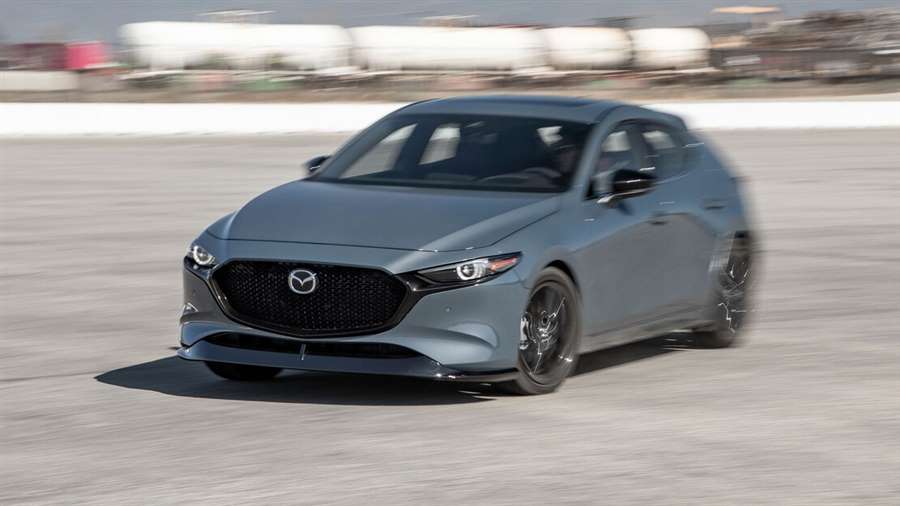
Beautiful On The Inside ...
As we've said before, the Mazda 3's cabin is the best in its class—by quite some margin, too. The dashboard is cleanly designed, while a set of mostly analog dials and a head-up display present important information neatly to the driver. All of the car's secondary controls (volume knob, indicator stalks, and HVAC) have a beautiful, high-quality weight to them. Even when you perform a task as mundane as adjusting cabin temperature, you manipulate something that feels well considered. Mazda is working hard to be seen as a near-luxury brand, and this interior is a standout example of what it's capable of.
The Mazda 3 hatch is also easy on the eyes, offers plenty of cargo space, and, if you never touch Sport mode—which activates more aggressive throttle- and shift-map behavior—will even return an EPA-rated 31 mpg on the highway. The Bose sound system is excellent, wind and tire noise are well hushed, and the whole car has an aspirational feel that justifies its $35,020 as-tested price.
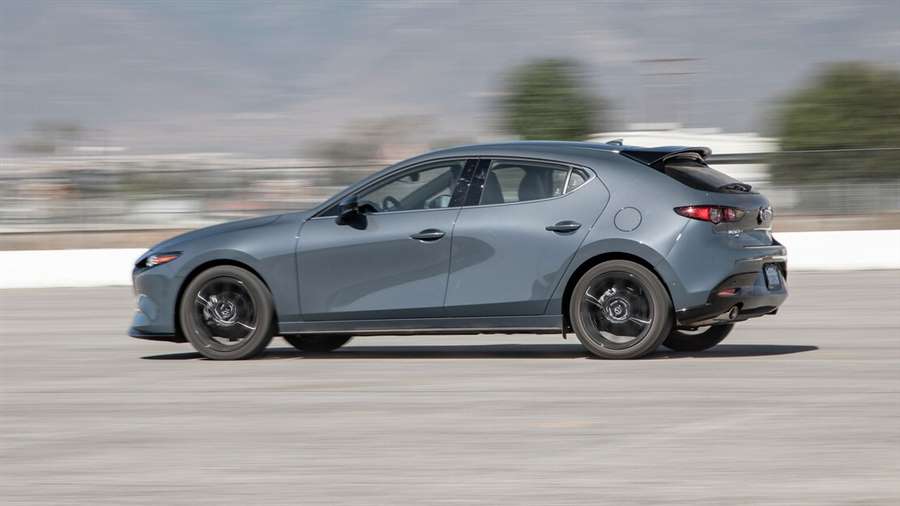
And if your test drive ended there, you'd think, "Great stuff—good job, Mazda!" But it doesn't. Even though the 2021 Mazda 3 Turbo is a high-quality item, there are other intangibles that matter to the overall experience.
Is It A Driver's Car?
A car might be executed well, but if it leaves you with a sense of "meh," is it still a good car? Most people would say, "Yes, of course." And we agree. But sometimes that isn't quite enough to satisfy, especially when we've come to expect a level of personality from Mazda products.
Maybe our enthusiast-influenced hearts inflate our standards. When we see a "Turbo" badge on a small car's rump, and a spec sheet boasting a 2.5-liter I-4 with 227 horsepower and 310 lb-ft of torque, plus all-wheel drive, we tend to imagine we're going to have a rippin' good time. Other hatchbacks given the same treatment over the years—cars like the Volkswagen GTI, Ford Focus ST, and the old Mazdaspeed 3—come to mind, and you think, gleefully, this could be the new Mazda enthusiasts have waited for.
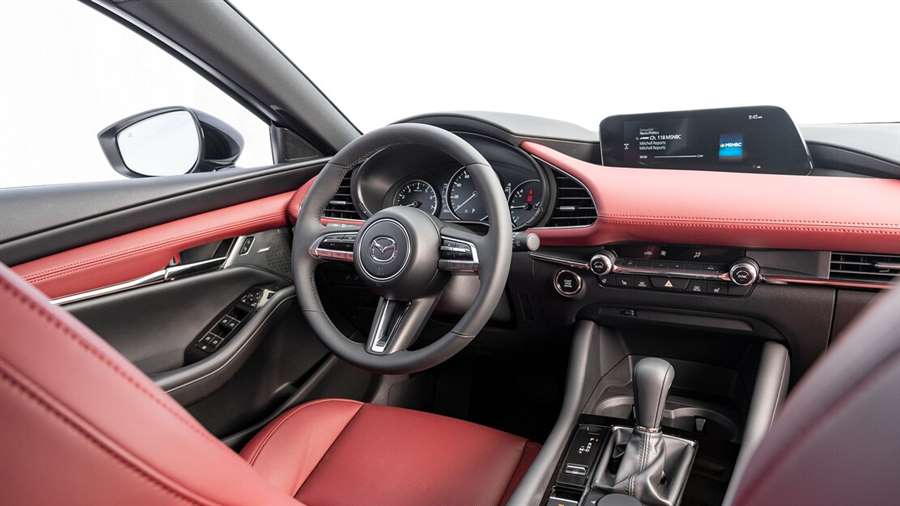
The new turbo I-4 engine—well, not exactly new new, as it's been in the CX-9 and the CX-5 for years now—makes 250 horsepower and 320 lb-ft if you can find 93-octane fuel. If 87 octane is the best you can do, those numbers fall to 227 horses and 310 lb-ft. Compared to the standard Mazda 3, this hopped-up hatchback makes an extra 41 horses and an additional 124 lb-ft of twist, at a bare minimum.
In our testing, the turbocharged 3 made the 0-to-60-mph sprint in 5.9 seconds and raced through the quarter-mile in 14.5 seconds. That's right up there with the best in its class. It's even quicker than the last dual-clutch-automatic-equipped VW Golf GTI we tested, which needed 6.0 seconds to accelerate to 60.
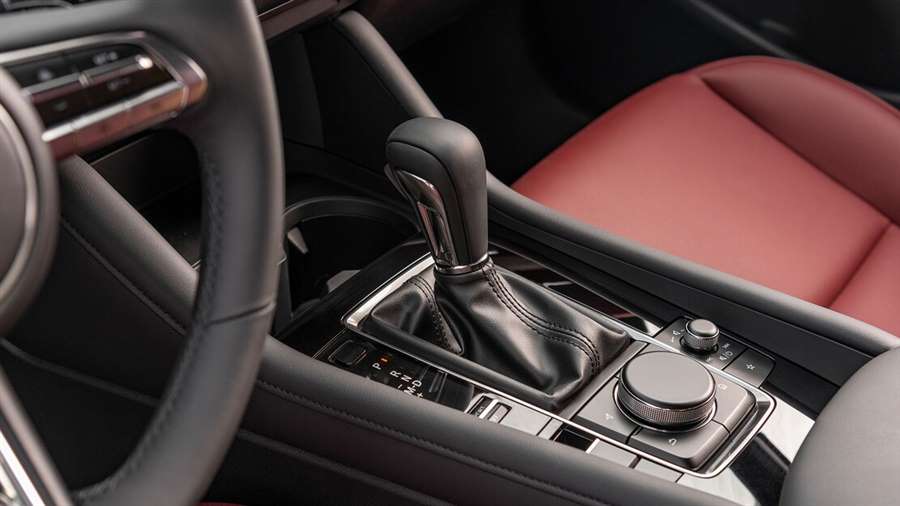
Sounds good, so hop in and start the engine. There's no clutch to operate; the 2021 Mazda 3 2.5 Turbo is an auto-only machine. Make your way to your favorite bit of twisty road, back-off the traction control, step on it and ... wait. Sure, it goes, but not in the way we expected. We're not talking about raw acceleration, which the numbers show to be good. But the transmission is a bit of a laggard, disappointing when Mazda's ethos used to nearly always deliver great-driving, enthusiast-pleasing cars right out of the box—without needing gobs of power to be fun.
Instead of feeling alive and on its toes, the 2021 Mazda 3 Turbo feels sedate. The brake pedal is mushy; instead of initial bite coming right near the top of the pedal's travel, you find an inch or so of travel before the binders affect much deceleration. This dulls the driving experience and lowers confidence in the car's reflexes. True hot hatches have sharp responses and feedback to tell you they were developed in part by beating them within an inch of their mechanical lives, so as to to make them as engaging and entertaining as possible. But that's not present here; in fact, it feels like a thick layer of latency-exaggerating rubber has worked its way into the Mazda's nooks and crannies.
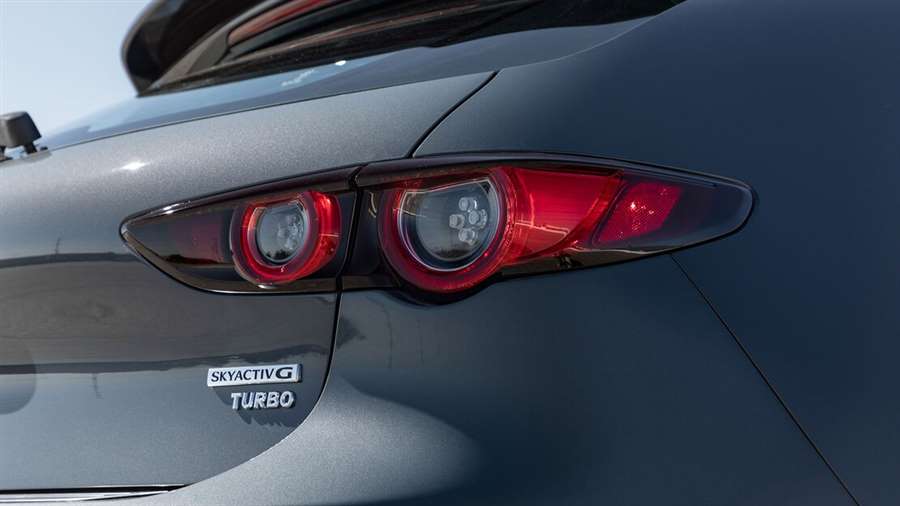
The suspension damping is the Turbo 3's sharpest trait, a characteristic that usually goes a long way toward providing a sporty personality. But like the standard Mazda 3 hatch, this car makes do with a rear torsion beam; that's in contrast to the previous-generation car and its independent rear end. The result (as we've noted before) is a car that rides somewhat poorly, and which is unsettled by small road imperfections even at low speeds. Manhole covers and expansion joints can jostle the rear out of line enough to necessitate frequent steering corrections. If power was all the 2021 Mazda 3 needed to be fun to drive, it would have delivered. Instead, the car's underlying potential feels unrealized.
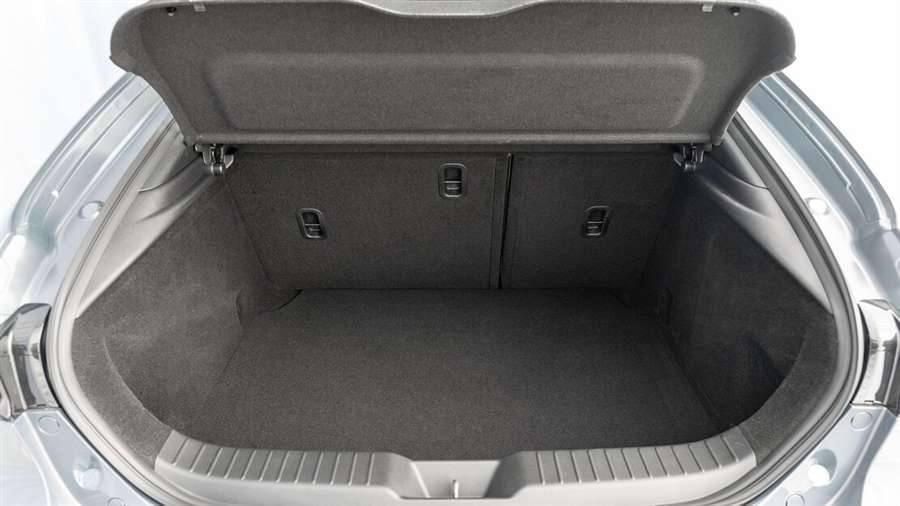
There's A Lot To Love, But It Isn't Lovable Yet
We know from experience Mazda can make a maniacal hot hatch that competes with the best of them. Yes, the old Mazdaspeed 3 was deeply flawed, but it was profoundly entertaining and lovable as a result. We didn't expect the new 2021 Mazda 3 2.5 Turbo to be a direct successor to that car—Mazda has matured past its crazy teenage years—but we hoped for some of the old 'Speed 3's charm. Instead, the Mazda 3 Turbo feels like its name and nothing more, namely a 3 with a turbocharger bolted to its engine.
None of this makes the Mazda 3 Turbo a bad car; it excels at being a great car. If you want a hatchback that's quiet, usable, and relatively quick, this 2021 Mazda 3 2.5 Turbo is a great choice. But if you want something that feels truly alive, you'll have to look elsewhere. Maybe our expectations were too high. Maybe you can say that's our problem. But the fact is that Mazda's previous creations set that high bar in the first place; unfortunately, this car drives under it.
Fiat 500 family "Hey Google"
As time goes on, cars are becoming more and more "digital", and these companies are looking for a partner from the automotive industry to make a car, so Fiat has made a collaboration with Google.
This could be the most extreme collaboration so far, the Fiat 500s, 500X crossover and 500 L MPV are a bag branded with Google colors and charts, and above the front wheels will be engraved "Hey Google", writes B92.
Also, the "Hey Google" inscription can be found on the seats, which has been seen so far, but not on the outside of the car.
All three mentioned cars will have 7-inch touchscreen screens with Google Assistant installed, and some of them offer unique options due to the Fiat Mopar Connect service.
2021 Hyundai Santa Fe 2.5T Pushes Toward Luxury
In top Calligraphy trim, Hyundai's new Santa Fe two-row crossover has luxury aspirations and a strong, 277-hp turbo engine.
It is hard for a car lover to get excited about the two-row mid-sized crossover segment. And although we're not happy to admit it, unexciting and practical is exactly what a lot of car buyers want and need. Speaking of need, while we were on our way back from a Costco run in the 2021 Hyundai Santa Fe, we spotted a BMW Z3 with the top down and a massive, framed poster riding shotgun. The driver probably has more stories to tell about that Z3 than most crossover owners, but while we were looking enviously at his roadster, he probably cast a wanting eye on our practical and spacious Santa Fe. It's also entirely possible he never saw the Santa Fe as his poster was blocking most of the view to his right.
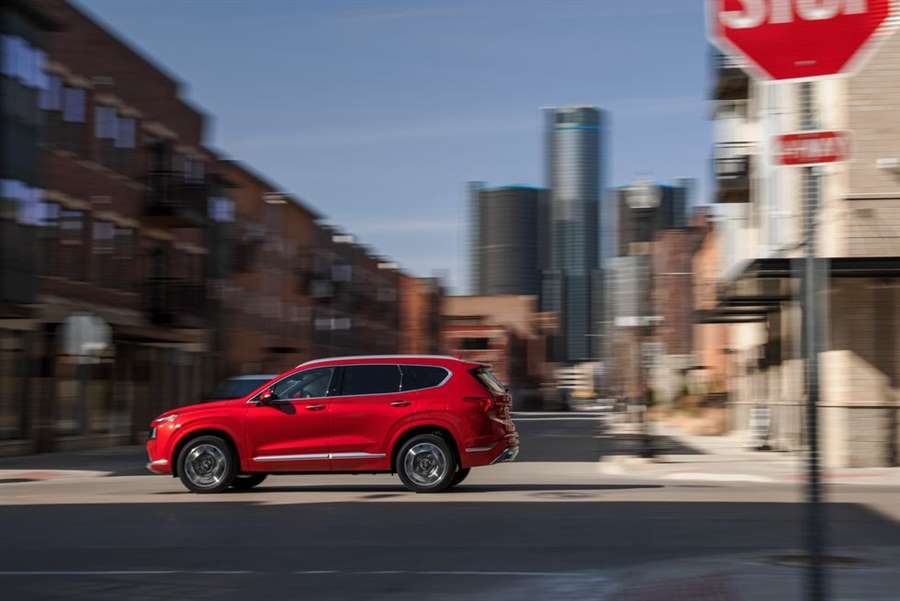
While a five-passenger near-luxury crossover may never be what we daydream about, so far in 2021 the Santa Fe has been Hyundai's second-bestselling vehicle, only a few hundred units behind the Tucson, Hyundai's slightly smaller crossover. Hyundai's compact Elantra slightly outsold the Santa Fe in 2020, but its sales are down 26 percent compared to the first two months of 2020. If crossovers are to be Hyundai's future, the recently redesigned Santa Fe is a fine emissary.
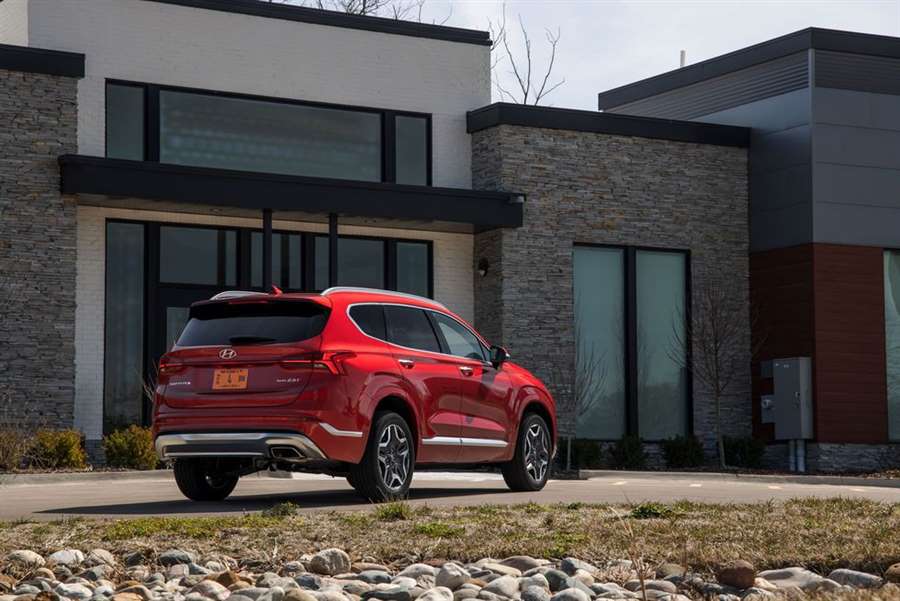
The Santa Fe starts at $28,035 for the base SE with front-wheel drive; all-wheel drive adds $1700. From there the rungs climb through the SEL and Limited before reaching the top-shelf Calligraphy. The $43,440 Calligraphy model that made the rounds in the office came packed with standard features. The only extra was a $155 set of carpeted floor mats. Hyundai introduced the high-spec Calligraphy trim level in the Palisade, and now it is trickling down to the Santa Fe. Calligraphy adds quilted leather seats, a panoramic roof, all the driver-assistance technology inattentive drivers crave including lane-keeping assist, blind-spot monitoring, and an adaptive cruise-control system.
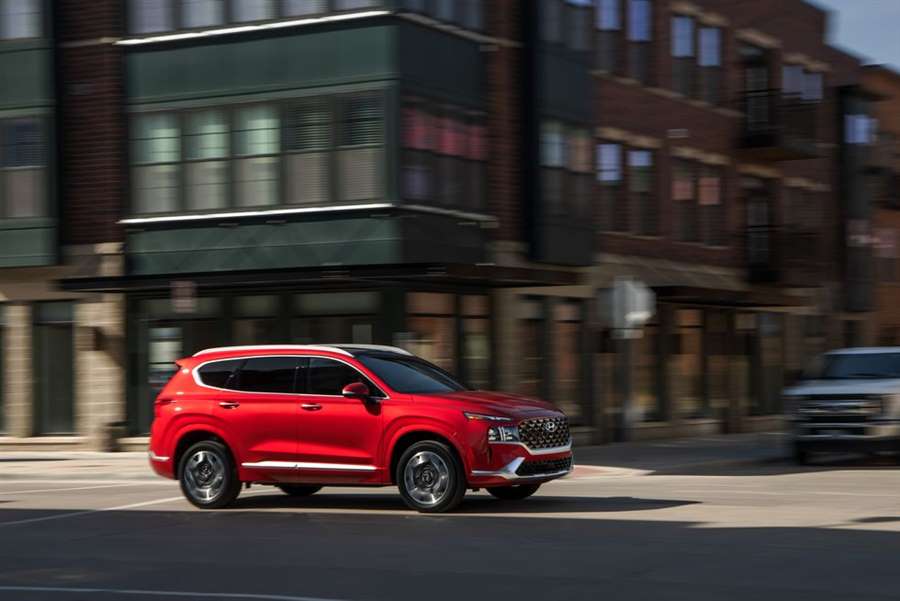
The front seats are supportive, and there's plenty of space to store small items, including a dedicated slot for your phone. But the new push-button shifter will take some getting used to.
The rear seat isn't as pleasant a place. While the legroom is good, there's a lack of headroom for anyone approaching six feet. The second row is outfitted and trimmed just as nicely as the first row, but the panoramic roof removes 1.2 inches of headroom. There's ample cargo space, and the Santa Fe will easily support a trip to the picture-framing shop or the luggage of four road-tripping folks.
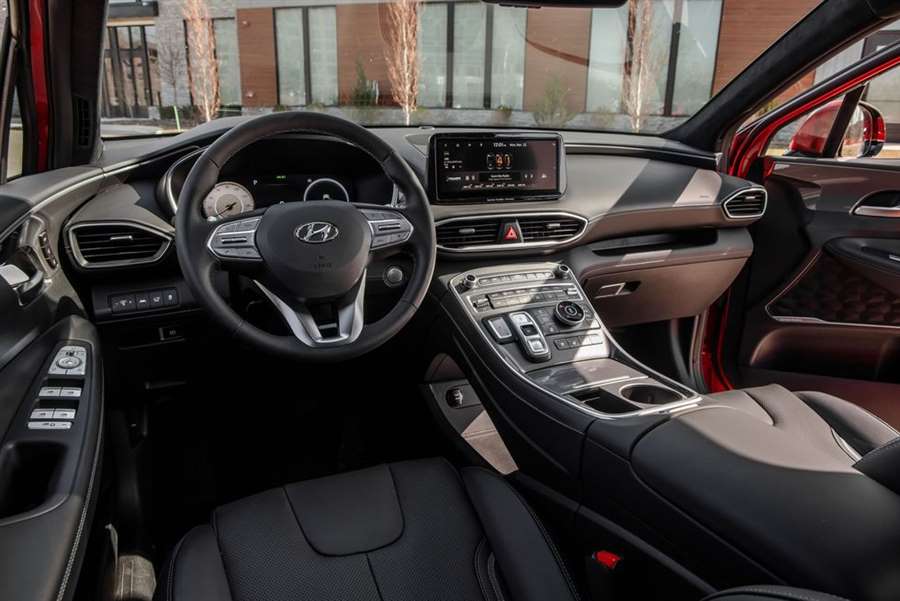
A 277-hp turbocharged 2.5-liter four-cylinder is standard on Limited and Calligraphy models, lesser Santa Fes have a 191-hp naturally aspirated 2.5-liter four. The turbocharged engine has 42 more horsepower than the previous gen's turbocharged 2.0-liter four. The new turbo-four and the eight-speed dual-clutch automatic transmission work together seamlessly. Runs to 60 mph take a quick 6.0 seconds, and the transmission readily downshifts and helps the Santa Fe move from 50 to 70 mph in 4.1 seconds. That sprint to 60 mph is just behind the 280-hp Honda Passport's 5.8-second dash and noticeably quicker than the 6.8-second effort we recorded in a Ford Edge Titanium with a 250-hp turbocharged 2.0-liter four.
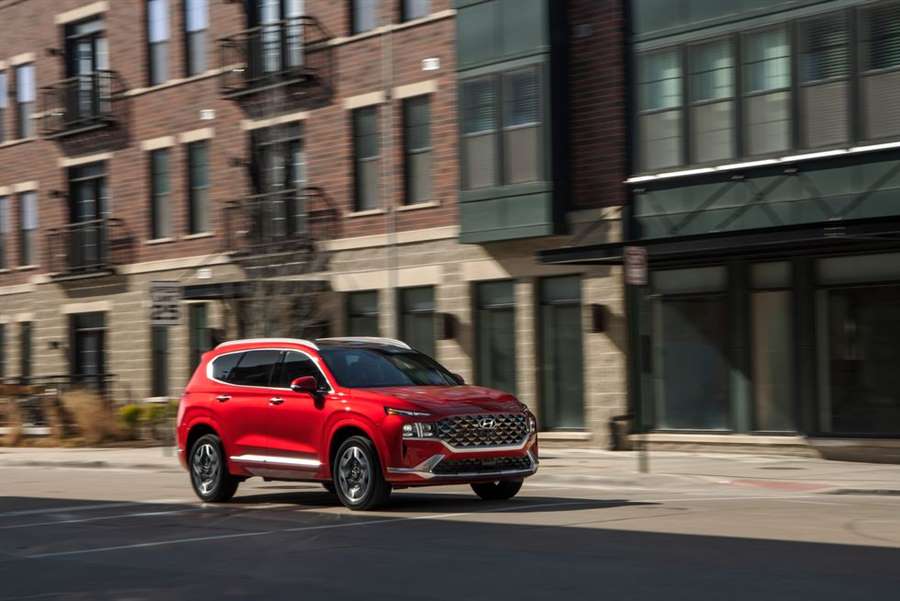
At the track, we measured 0.81 g overall on the skidpad, which bests the Passport's 0.78 g of lateral stick but trails the Edge's 0.83. The Santa Fe's steering is heavier than the numb and lighter steering in many crossovers. On the highway, there are no dead spots or latency to speak of. It's no Alfa Romeo, but it's responsive and a victor in this segment. The ride can tend towards jittery depending on the road, and you may catch the rear seatbacks jiggling along in the rearview mirror. Our tester arrived with 19-inch wheels rather than the 20s that most Calligraphy models will have in the future, so the 20s might be even harsher. If you'd like your Santa Fe set up that way, too, act fast. Hyundai is selling 19-inch versions as a "limited availability" variant of the Calligraphy, and you'll get a $200 discount for forgoing the bigger wheels. Hyundai hasn't explained why the 20s aren't out yet, but our money is on supply-chain disruptions.
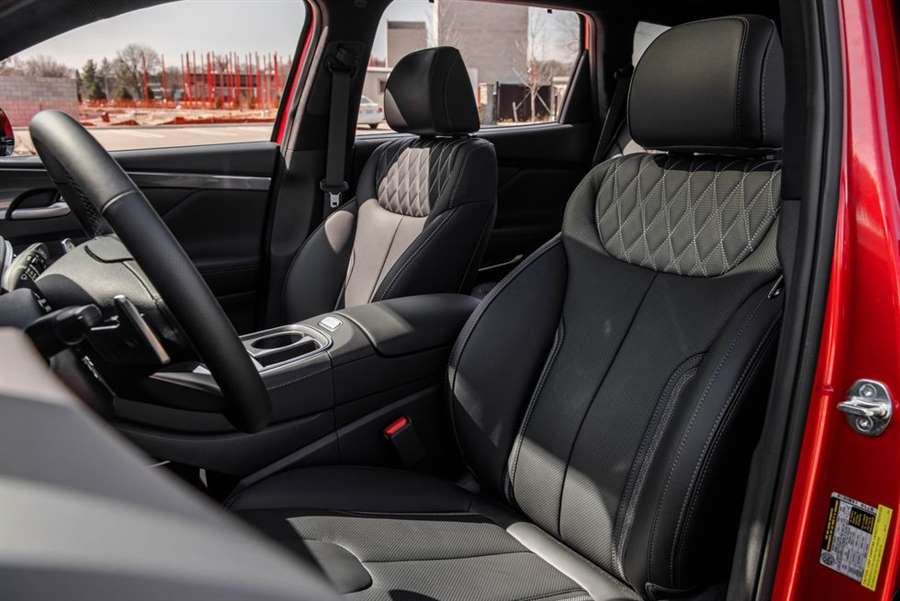
With the cruise set at 75 mph, the Santa Fe returned 27 mpg over a 200-mile highway drive, a single mpg shy of the EPA's estimate. And over almost 400 miles of real-world driving (much of it around town but some of it on uncongested highways), it returned 20 mpg, one short of the Santa Fe's EPA city rating. A Passport returns EPA numbers of 19 city and 24 highway, and an Edge with the 2.0-liter turbo comes in at 20 city and 28 highway.
The worst mid-size crossovers are dull and soulless enough to sap your soul. The Santa Fe is different. Its exterior design is original and attractive. Aside from the occasionally jittery ride, the Santa Fe drives and behaves in a refined and almost engaging manner. We've yet to sample the naturally aspirated Santa Fe or the new hybrid powertrain, but based on what we know of the rest of Hyundai's product portfolio, they're probably nicer inside than their price tags suggest. Every car in this segment asks buyers to make sacrifices in the name of convenience, but the Santa Fe demands less and gives more than many others in its class. If you're not ready for or don't need the Palisade and Telluride's three rows, the Santa Fe should get you home from the framing shop without drawing too much attention.

